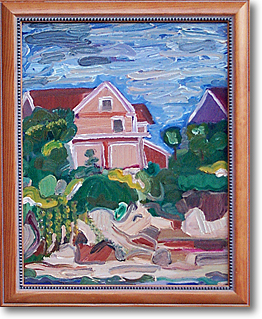Photographs of Your Paintings: Go Digital and Share Your Work
There are painters that prefer to dip their brush in paint and glide their hands over a canvas for themselves, and other painters that bring their skills for a profit as they try to sell their work. For those that are looking for a profit, oftentimes a good photographic technique will be the difference between being able to sell the photographs and not.
When taking photographs, using a digital camera is a great direction to go. It offers many options on the camera, different shooting techniques and also the simplicity of shooting as many photos as needed before deleting those that are not. While the photography aspect of preserving or sharing paintings is common practice, taking video of a painting is not unless the footage is being integrated and spliced into another larger video.
As always there are different steps to ensuring the photographs of the painted works come out as intended from preparation to shooting. Let’s start with what is needed to be successful…

Prep to Shoot
The obvious is to gather the camera, artwork, and any cleaning supplies if the painting is in glass. Remove all smudges and dust from the glass and have extra batteries on hand. A tripod may be needed and maybe a polarizing filter to reduce reflections.
Preparation may be easy, but the next steps may be more challenging. Getting the right shot could take more than just a couple clicks of a button.
Taking the Shot
First. Don’t use flash. That’s the best advice before any other. The best light for photographing paintings is either in overcast light or by indirect natural light. It will make the photograph more natural looking and much closer to the original painting colors.
Advice about where to place the paintings to be photographed would be outside against a wall. That may seem a little odd, but it would offer more natural lighting being outside. The main challenge about leaning the painting against the wall is that the photograph must be taken straight on with no skewing of the frame or edges.
Speaking of, a good, solid frame on the painting can add a sense of completeness, realness and greater importance. If the frame is actually not a good one, it can either be replaced or cropped out of the final photograph. As with most frames comes the glass, and with the glass comes the glare. Not only will taking out the glass be easier, but it will help make a better photograph. If the glass must be used, turn off the flash, use a polarizing filter spoken about earlier, and look out for reflections. That’s the key. Look out for reflections.
Finally
Take pictures. Take pictures. Take pictures.
Eventually the right photograph will be taken, and the artist will be able to share it with the world, fans or potential buyers. It may take some time to get the right one, but one is all that is needed.


